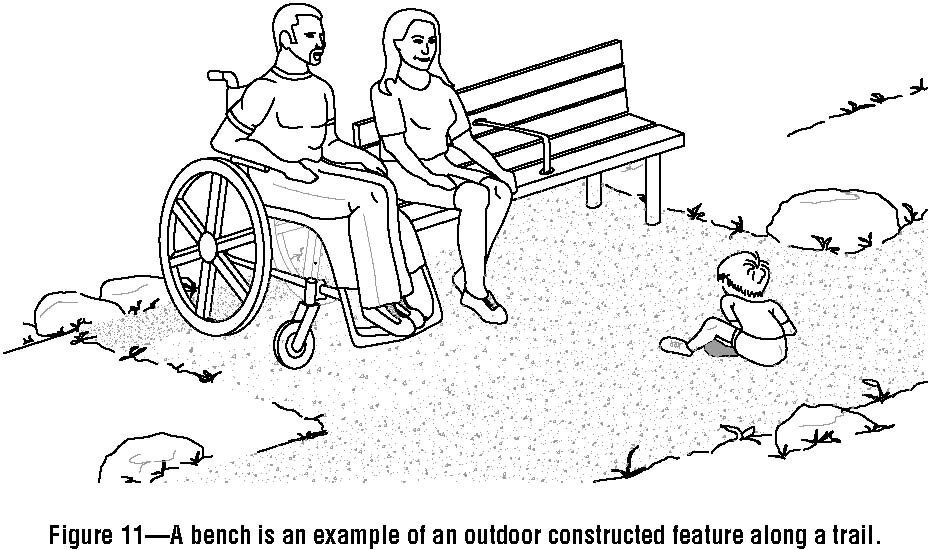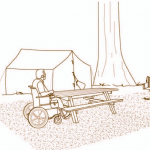Definition [F106.5]
A trailhead is defined as an outdoor space that is designated by an entity responsible for administering or maintaining a trail to serve as an access point to the trail. The junction of two or more trails or the undeveloped junction of a trail and a road is not a trailhead. For example, if a trail crosses the road, the crossing does not automatically become a trailhead.
Trailhead Information Signs [F216.13 and 1017.10]
All hikers need trail information to make informed decisions. Information about the accessibility of a trail enables people with disabilities to decide whether the characteristics of the trail are suited to their abilities. When this information is available on Web sites and in printed materials, it allows all hikers, including people with disabilities, the opportunity to understand the possible challenges of the trail before arriving at the trailhead.
Signs can provide additional information to help people with disabilities decide whether or not to attempt a trail. For example, information about the height of any major obstacles, such as boulders in the trail tread, can help people determine if they can overcome these barriers.
The new trail information signs must include the following information:
- Length of the trail or trail segment
- Type of trail surface
- Typical and minimum trail tread width
- Typical and maximum trail grade
- Typical and maximum trail cross slope
Outdoor Constructed Features at Trailheads [F247.3.1 and 1011]
When outdoor constructed features, such as benches, picnic tables, or trash and recycling receptacles, are provided at trailheads, at least 20 percent, but no less than one, of each type of element provided must comply with the applicable technical requirements for the element. The technical requirements for outdoor constructed features are discussed in the section of this guide on outdoor constructed features. Toilet and bathing facilities, parking facilities, and drinking fountains must comply with the applicable sections of the ABA Standards.
Outdoor Recreation Access Routes at Trailheads [F247.3.2]
Trailheads are usually accessed by vehicle rather than by hiking. At least one outdoor recreation access route (ORAR) must connect the following at trailheads:
- Accessible parking spaces or other arrival points
- The starting point of the trail
- Accessible elements, spaces, and facilities within the trailhead
The technical requirements for ORARs are discussed in the section of this guide on ORARs. ORARs provide greater accessibility than a trail because areas served by ORARs are typically more developed than trails.
Camping and Picnic Facilities and Viewing Areas on Trails [F247.4]
When camping and picnic facilities or viewing areas are constructed or altered along a trail, they must comply with the applicable scoping and technical requirements for the facility, regardless of whether the trail complies with the technical requirements for trails. The scoping and technical requirements for camping and picnic facilities and viewing areas are discussed in the sections of this guide on camping and picnic facilities and viewing areas.
Outdoor Constructed Features Along Trails [F247.5]
When outdoor constructed features, such as benches (figure 11), picnic tables, or trash and recycling receptacles, are provided along a trail, at least 20 percent, but no less than one, of each type of element provided at each location on the trail (other than within camping and picnic facilities and viewing areas, which have their own scoping requirements for outdoor constructed features) must comply with the applicable technical requirements for the element, regardless of whether the trail complies with the technical requirements for trails.






